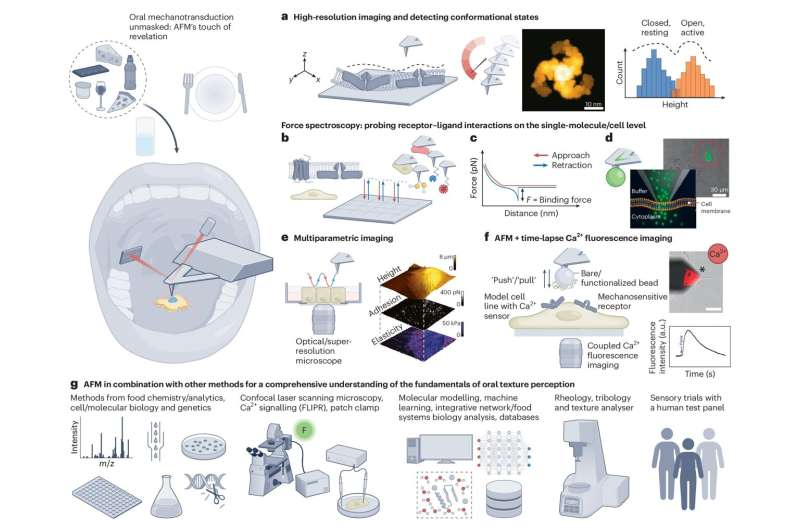This article has been reviewed according to Science X's editorial process and policies. Editors have highlighted the following attributes while ensuring the content's credibility:
fact-checked
peer-reviewed publication
trusted source
proofread
New research approach: Exploring the mouthfeel of food with a microscope

A team led by Melanie Köhler and Veronika Somoza from the Leibniz-Institute for Food Systems Biology has presented a new research approach in the journal Nature Food. The perspectives article focuses on different ways to study the mouthfeel of food using atomic force microscopy to better understand the biophysical mechanisms that contribute to the overall sensory impression of a food.
New findings in this area could drive the development of health-promoting products that contain less salt, fat, sugar and calories but still have a convincing mouthfeel.
The mouthfeel of a food plays a crucial role in its acceptance. For example, many people prefer the creamy consistency of quark (a soft cheese) and yogurt. Apples, on the other hand, should be juicy and crunchy and bread crusts crispy. This diversity shows that the optimal mouthfeel is highly dependent on the type of food and is not uniformly defined.
Researching complex interactions
In addition, the interplay between the constituents, the texture and the temperature of food and various sensor molecules and cell types in the mouth is extremely complex. Junior research group leader Melanie Köhler says, "Mechanoreceptors in particular, which react to pressure or stretching, have been under-researched so far with regard to the optimal mouthfeel and their contribution to the flavor of a food."
Veronika Somoza, Director of the Leibniz Institute in Freising, adds, "In our current perspectives article, we present various experimental approaches that can be used to tackle the many unanswered questions surrounding mouthfeel from a biophysical point of view. We have focused on biological atomic force microscopy."
The atomic force microscope is a suitable tool for scanning surfaces at an atomic level or investigating interactions between molecules such as food constituents and receptor proteins. However, it can also be used to apply mechanical pressure to cells, thereby activating mechanoreceptors for identifying and characterizing their cellular signal response.
Rethinking the traditional definition
According to Köhler, a fundamental biophysical and functional understanding of the diverse mechanosensory key players in oral and extra-oral tissue as well as their responses to food constituents is important. It enables constructing new hypotheses about the contribution of mechanosensors to the overall sensory impression of a food for answering many questions that are still pending in the molecular field.
"With regard to food research, we expect that future results will lead to a revision of our traditional definition of flavor, i.e., the overall sensory impression of a food, by including mechanical perception as an additional factor alongside taste and smell," explains the young scientist. "In terms of food production, our pioneering research approach opens up promising perspectives for the design of future, enjoyable and health-conscious nutritional options," Köhler continues.
More information: Melanie Koehler et al, Biophysical investigations using atomic force microscopy can elucidate the link between mouthfeel and flavour perception, Nature Food (2024). DOI: 10.1038/s43016-024-00958-3
Journal information: Nature Food
Provided by Leibniz Institute for Food Systems Biology



















